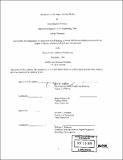An analysis of the Aspen housing market
Author(s)
Soininen, John Markham, 1973-
DownloadFull printable version (5.059Mb)
Other Contributors
Massachusetts Institute of Technology. Dept. of Urban Studies and Planning.
Advisor
Henry Pollakowski and William C. Wheaton.
Terms of use
Metadata
Show full item recordAbstract
Aspen, Colorado, has a booming economy, and there is the potential for working residents to earn substantial incomes. Purchasing a home is not an option for most wage earners, though, because the average home price is over a million dollars. Much of the existing housing stock in Aspen and Pitkin County is owned by very wealthy second-home owners. As a result, Aspen's attractiveness as a home to local employees is limited by its housing market. The real estate industry thrives in part due to the scarcity of developable property in the narrow valley, but primarily due to Aspen's distinction as a world class resort. Pitkin County is located in a beautiful section of the Rocky Mountains. This part of Colorado has excellent skiing 180 days out of the year, and is blessed with sunshine 80% of the time. Additionally, there are five 18-hole golf courses and numerous other outdoor activities. Aspen continues to grow as a year round resort. Pitkin County is roughly 960 square miles in area, but 83% of the county is public land. Getting to Aspen is very difficult. Aspen is located at the end of a horseshoe-shaped valley more than 60 miles from an interstate highway. Pitkin County is analogous to a small resort island due to its isolation and desirable location. The area surrounding this mountain valley is primarily public land and the roads were not designed for commuter traffic. The community has approximately 1,900 rent-controlled or deed-restricted "affordable" units. This large number of subsidized units is still not sufficient to meet the demand at realistic rents. Thus many workers must live far from there jobs and commute to work. The purpose of this study is to analyze the Aspen and Pitkin County housing market. Emphasis is placed on what has happened in Pitkin County to cause these problems, and what is being done to alleviate the stresses on the housing market. Insight into what an isolated resort economy in the United States has done to deal with its housing problems can hopefully be useful to similar economies around the world.
Description
Thesis (S.M.)--Massachusetts Institute of Technology, Dept. of Urban Studies and Planning, 1999. Includes bibliographical references (leaf 74).
Date issued
1999Department
Massachusetts Institute of Technology. Department of Urban Studies and PlanningPublisher
Massachusetts Institute of Technology
Keywords
Urban Studies and Planning.